- Powerful 3/4 hp motor
- Quiet operation
- Affordable
- Automatic power switch
- Comes with two pumps
- Battery backup during blackouts
Bottom line: The Wayne CDU980E offers power and durability
Sump pumps can help save your basement from water damage and prevent the clean-up nightmare that comes with a flooded basement.
Time and again, our research pointed to the Wayne CDU980E as the best sump pump for most houses. Its durable cast iron and stainless steel construction and powerful motor make it worth its higher price tag.
Keep reading to see all of our recommendations for the best sump pumps. And check out our FAQ to learn more about sump pumps and their benefits.
What is a sump pump?
Most sump pumps sit in a sump basin or pit below the basement floor, allowing the pump to function before water levels enter your home.
Compare the best sump pumps
| List price* |
| Type |
| Power |
| Maximum vertical lift |
| Flow rate |
| Pipe connector size |
| Construction |
|
Best overall
|
Best value
|
Best battery backup
|
Best pedestal pump
|
Affordable power
|
| Wayne CDU980E | Superior 92250 | Wayne WSS30VN | Superior 92551 | AmazonCommercial AB-P100 |
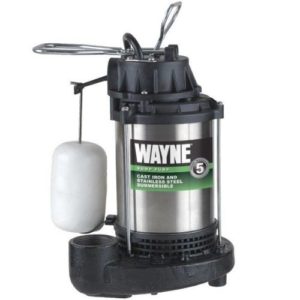 |
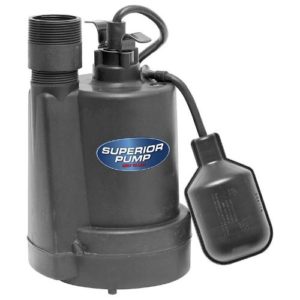 |
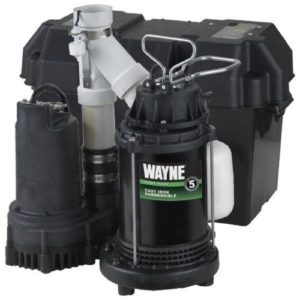 |
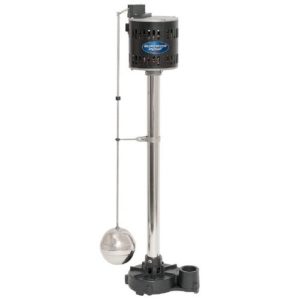 |
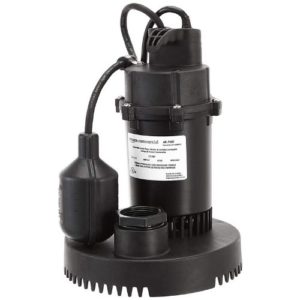 |
| $146.86 | $56.22 | $450.00 | $127.84 | $88.99 |
| Submersible | Submersible | Submersible with battery backup | Pedestal | Submersible |
| 3/4 hp | 1/4 hp | 1/2 hp | 1/2 hp | 1/3 hp |
| 21 ft. | 25 ft. | 15 ft. | 25 ft. | 29 ft. |
| 5,490 GPH (0 ft.), 4,600 GPH (10 ft.) |
1,800 GPH (0 ft.), 1,200 GPH (10 ft.) |
5,100 GPH (0 ft.), 3,840 GPH (10 ft.) |
3,600 GPH (0 ft.), 2,700 GPH (10 ft.) |
3,060 GPH (0 ft.), 2,620 GPH (10 ft.) |
| 1 1/2 in. | 1 1/2 in. 1 1/4 in. |
1 1/2 in. 1 1/4 in. |
1 1/2 in. | 1 1/2 in. |
| Stainless steel, cast iron |
Thermoplastic | Cast iron, thermoplastic |
Stainless steel, cast iron |
Thermoplastic |
| View on Amazon | View on Amazon | View on Amazon | View on Amazon | View on Amazon |
| Read review | Read review | Read review | Read review | Read review |
*Amazon.com list price as of 06/04/2020 at 3:54 p.m. (MT). Read full disclaimer.
About flow rate and vertical lift
Our approach
To find the best sump pumps, we spent 24 hours researching information from manufacturers, online reviews, plumbers, and sump pump specialists. We considered 20 products from 11 different manufacturers, ultimately narrowing down our list to our top five with five honorable mentions.
With one exception, we ignored high-performance sump pumps that cost over $200, though many of the brands in our review sell more expensive models for situations that require a higher flow rate or greater vertical lift.
Based on our research, we primarily chose and recommended submersible sump pumps with 1/3 hp motors or higher. We also mention battery-backup and pedestal-type pumps for folks that want alternative options. To learn more about how we review and rank products, check out our full methodology.
About horsepower
Sump pump reviews
1. Wayne CDU980E: Best overall
The Wayne CDU980E consistently ranks among the top sump pumps in online reviews, and it’s easy to see why. This pump comes with a powerful 3/4 hp motor that moves up to 5,490 gallons per hour (GPH), which is more than other pumps we researched, including several more expensive models.
It’s a submersible sump pump, making it quieter than pedestal-type pumps. This is useful if you spend a lot of time in your basement and don’t want a noisy pump to interrupt your movies and projects.
Durability is another standout feature of the Wayne CDU980E. It has a cast iron and stainless steel body that protects the internal motor from water damage. Wayne is confident enough in this design that the pump has a five-year warranty, the longest warranty among sump pumps.
Because this submersible pump rests in the bottom of a sump pit, it’s harder to reach for regular maintenance than a pedestal pump. This isn’t enough of an inconvenience for most folks but matters if you have trouble bending down or laying on the floor for occasional debris removal.
The Wayne CDU980E costs around $150, making it more expensive than most competitors we looked at. Still, we think the powerful motor and durable design are worth the extra cash.
Pros
- Quiet operation
- Stainless steel and cast iron construction
- Powerful 3/4 hp motor
- Five-year warranty
Cons
- Relatively expensive
- Harder to maintain than pedestal pumps
Decades of experience
2. Superior 92250: Best value
Superior Pump touts 20+ years of experience, making some of the most affordable sump pumps on the market. Our favorite pump from this company is the Superior 92250 because it costs around $55—almost one-third the price of our top pick from Wayne.
We chose this pump because it’s an upgraded version of the popular Superior 91250. The main difference is that the 92250 has an automatic switch, so you don’t have to activate it manually when water starts to build up. It’s around $10 more expensive, but the automatic operation is worth every penny.
This sump pump doesn’t have a particularly powerful motor, only 1/4 hp, but moves up to 1,800 GPH. This is almost as much water per dollar as more expensive pumps. We also like that this unit has a small size that’s easy to move and lift out of the sump basin for maintenance.
Unfortunately, the sump pump’s light frame comes from a plastic construction that isn’t as durable as the metal casings on other brands. You might replace this more often than an expensive model, but it’s an excellent option to save money for other home improvements.
Pros
- Affordable
- Light, compact size
- Automatic power switch
Cons
- Plastic construction
- Low horsepower
3. Wayne WSS30V: Best battery backup
The Wayne WSS30VN is actually a bundle of two pumps: a main pump and a backup pump. Together these pumps allow you to have flood protection, even when the power goes out. You can buy the battery backup pump separately, but we wanted to highlight that battery backup pumps aren’t a stand-alone solution.
Most battery backup pumps don’t offer a high flow rate to pump water and last only as long as the battery does. Essentially, you’re paying for redundancy to keep water out of your basement when the primary sump pump loses power. Like other submersible sump pumps, you can expect quiet operation from the Wayne WSS30VN. The primary pump has a powerful 1/2 hp motor that can move up to 5,100 GPH, almost as much as our top pick, the Wayne CDU980E.
For such an expensive bundle, it doesn’t come with some vital components like a battery and a check valve. The check valve is usually a separate $10–$30 purchase for sump pump installations, but buying a battery for the backup pump adds around $275 to the overall cost. This is a big detractor if you want to save money.
What is a check valve?
Even though the backup sump pump is a nice feature, it’s unnecessary unless your house has a history of simultaneous power outages and flooding. Still, if you must have a battery backup, we think the Wayne WSS30V is an excellent option.
Pros
- Comes with a primary and backup sump
- Battery backup during power outages
- Quiet operation
Cons
- Expensive
- Battery sold separately
4. Superior 92551: Best pedestal pump
The Superior 92551 has a different design than other pumps on our list. Its motor rests on a pedestal at the top of a tall shaft—not at the bottom of a sump basin like a submersible pump. This keeps the motor far from the water below, which results in a longer-lasting pump design. It qualifies for a five-year warranty because its electrical components have less exposure to water.
Because the motor is above floor level, it’s easy to adjust the float switch that turns on the unit and makes it easier to look for motor problems. You still need to clean out the sump basin as debris builds up, but it’s less of a hassle when your motor casing doesn’t have gunk all over it.
The 1/2 hp motor on this pedestal sump pump isn’t as powerful as it would be on a submersible pump, but it has an excellent output of up to 3,600 GPH to keep your basement dry. Since the motor isn’t down in a sump pit, it’s noisier than submersible models, but the noise isn’t a problem if your pump doesn’t run very often.
While we prefer submersible pumps for their power, the easier maintenance of this pedestal pump makes it a useful alternative for folks with limited mobility.
Pros
- Easy to maintain
- Long warranty
- Powerful 1/2 hp motor
Cons
- Noisy operation
5. AmazonCommercial AB-P100: Affordable power
Amazon is a fairly recent entrant in the sump pump market with its AmazonCommercial line of products.
In general, the company has an excellent reputation for customer service, and its white-label AmazonBasics products are surprisingly effective, given their lower prices. The AmazonCommercial AB-P100 is a superb example because it offers a high flow rate for an affordable price.
This submersible unit can pump up 3,060 GPH thanks to a 1/3 hp motor, making it an excellent intermediate pick between the ultra-cheap Superior 92250 and the high-flow Wayne CDU980E. The motor also has an impressive vertical lift of 29 feet, which means it can pump water higher than any other pump on our list.
About vertical lift
One of the reasons this pump is so affordable is because its plastic body isn’t as durable as steel or cast iron. Still, Amazon sells more powerful cast iron and stainless steel variants for about $25 more if you want something more robust. All of these pumps have a one-year warranty, which isn’t as long as the five-year coverage you get with more established products like the Wayne CDU980E.
In any case, we think Amazon crafted a solid product that provides excellent performance for a relatively low price.
Pros
- High flow rate
- More affordable than similar products
- Vertical lift up to 29 feet
Cons
- Plastic construction
- Short warranty
More sump pumps we considered
Liberty Pumps 257
The Liberty Pumps 257 (about $198) is more expensive than our top pick, the Wayne CDU980E, but doesn’t quite match the flow rate. Even though it’s less powerful, this pump can handle solid particles up to 0.5 inches, something that our top pick can’t do. This makes Liberty Pumps suitable for moving dirty water with lots of debris.
Zoeller M53
Zoeller has roots in 1939, making it the oldest company we looked at for our review. The Zoeller M53 (about $175) is similar to the Liberty Pumps 257 because it can also handle solids up to 0.5 inches, making it a heavy-duty alternative to typical home sump pumps.
Final word
A flooded basement is expensive and frustrating, but you can prevent it with a reliable sump pump like the Wayne CDU980E. It has a solid design of cast iron and stainless steel that protects its powerful motor from corrosion. Speaking of powerful motors, it outperforms the competition by a healthy margin, making it quite capable of protecting your basement.
Feel free to browse our FAQ to learn more about sump pumps and why they matter.
Sump pump FAQ
Do all basements need a sump pump?
You need a sump pump if your home meets certain requirements:
- Past water damage and basement flooding
- Poor soil drainage after storms
- High groundwater levels in your area
If your home already has an old sump pump, consider replacing it with a newer model. During our research, we found that most manufacturers and plumbers recommend replacing your sump pump every 5–10 years, depending on the quality of the pump.
Plan to replace your pump on the same schedule, especially if you have a newer home or know the pump installation date. If you don’t know how old your pump is, you can replace it without spending a lot of money.
For homes that need sump pumps but don’t have them, you probably need to hire a professional to install the pump.
Where do sump pumps discharge?
The machine pumps water up a pipe that drains outside your home. Depending on your property and the local building regulations, the pipe might drain directly onto your lawn, go under your lawn, or into a storm drain. Do not attach a discharge to a storm drain without checking with your local government.
What is pump head, and why does it matter?
The pump head (or vertical lift) is how high a pump can move water before it stops working. If the discharge pipe is higher than the pump head, water will continue to accumulate in your basement instead of going through the pump.
Pump head matters because the pump’s flow rate decreases as you pump the water higher. Most sump pumps don’t need to pump water more than 5 to 10 feet higher than your basement floor. But more powerful pumps guarantee a flow rate that keeps up with the water accumulation in your basement.
Do sump pumps smell?
Sump pumps can cause smelly basements if standing water sits in the sump basin long enough for microorganisms to grow. During the wet season, the water moving through the basin will prevent smells, but you might need to clean the basin occasionally during drier times.
A strong water/bleach mixture (1 cup of bleach to 1 gallon of water) is usually enough to kill bacteria and eliminate undesirable smells. If the smell doesn’t go away, you may need to scrub the sump basin.
In general, there should always be a little water in the bottom of the basin to help prevent stinky gases from coming in through the discharge pipe.
What is better, pedestal or submersible sump pumps?
In general, we recommend submersible sump pumps for their power and quieter operation, but there are pros and cons to each type of sump pump:
| Submersible pros | Pedestal pros |
|
|
*Solid particles aren’t usually an issue in a properly-maintained home sump basin but tend to occur more frequently in agricultural and industrial settings.
Can you add battery backup to an existing sump pump?
Yes, many brands sell battery backup pumps that sit next to an existing sump pump. The backup pump isn’t very powerful and doesn’t replace your existing pump.
It removes water when the power goes out but eventually stops when the battery dies. Only a primary pump with an uninterrupted power supply can keep pumping in the long term.
Water-powered sump pumps
Who installs sump pumps?
If your home doesn’t have the correct sump pump infrastructure in place, you need to hire a contractor, plumber, or sump pump specialist (basement waterproofers). They’ll cut through your basement’s concrete floor to install a sump basin before setting up the pump, valves, and discharge pipes.
You also need an electrician to install a ground-fault circuit interrupter (GFCI) outlet to prevent water from creating an electrical hazard. GFCI outlets cut the power if they detect a problem with the electrical circuit, like exposure to water.
Replacing an existing sump pump is an intermediate DIY project you can do in a couple of hours if you don’t want to hire an outside contractor.
Disclaimer
*Amazon.com list price as of 06/04/2020 at 3:54 p.m. (MT). Product prices and availability are accurate as of the date/time indicated and are subject to change. Any price and availability information displayed on Amazon at the time of purchase will apply to the purchase of this product. Safewise.com utilizes paid Amazon links.
Certain content that appears on this site comes from Amazon. This content is provided “as is” and is subject to change or removal at any time.
The post Best Sump Pumps appeared first on SafeWise.
Aricle source here: Best Sump Pumps
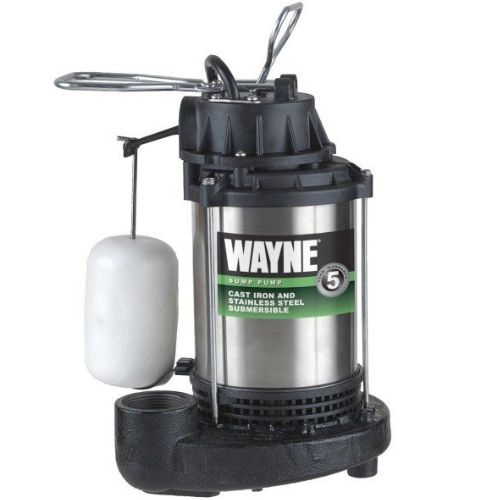
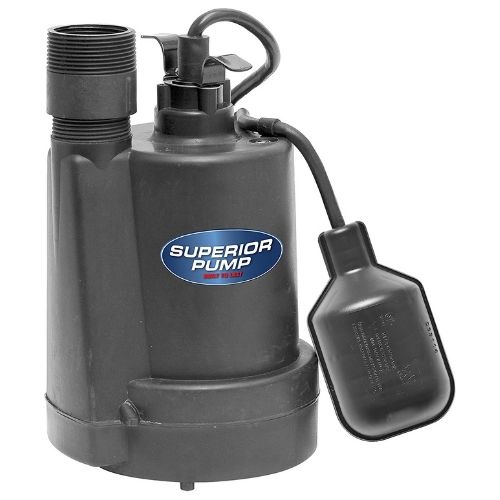
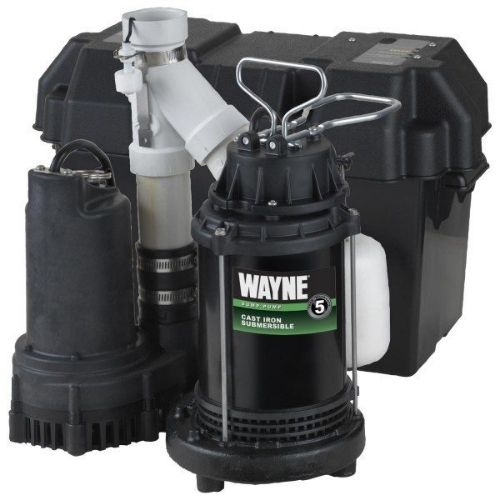
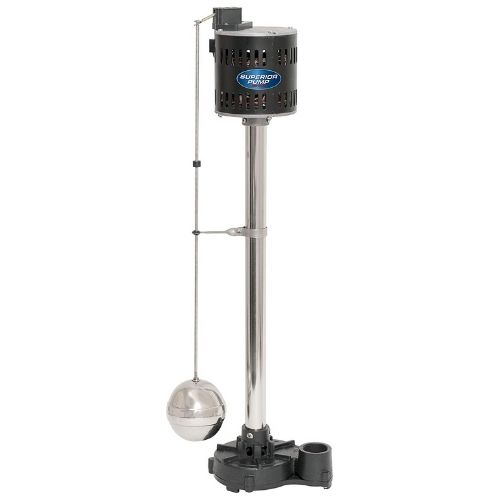
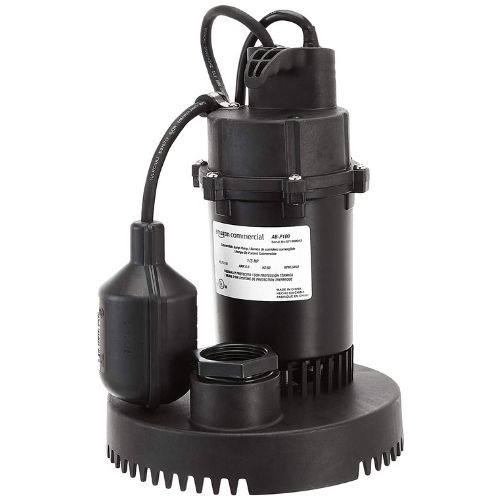
No comments:
Post a Comment